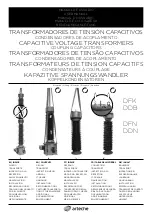
WIT2450
©
2000- 2005 Cirronet
™
Inc
24
M-2450-0000 Rev B
3. PROTOCOL MODES
In point-to-point applications, it is generally desired that the radios operate in a
transparent mode. That is, raw unformatted data is sent from the host to the radio and is
received as raw data from the receiving end. The addressing and error detection and
correction are still performed by the radios, but it is transparent to the user application.
To set up a point-to-point network, one radio has to be set up as a base station. When the
radios are powered on, the base station will send out the synchronization signal at the
beginning of each hop. The remote will synchronize with the base and automatically
request registration. Once the remote is registered, the radios can transmit data. Protocol
mode operation is available in point-to-point mode if desired.
If the base station is to be responsible for directing data to a specific remote in point-to-
multipoint mode, the data sent to the base station by the user application must adhere to a
packet format. This allows transmissions from the base station to be directed to a specific
remote. Data received by a base station from a remote is similarly formatted to identify
to the user application the remote that sent the transmission. The remotes may still use
transparent mode without formatting to send data to the base, if desired. The protocol
format is selected through the
Set Protocol Mode
command
sp
.
Base and remote radios can use protocol modes to insure that a packet is transmitted to
the base without being broken up over multiple hops. The
data length
value in the data
packet becomes the effective
minimum packet length
and
maximum packet length
for that
packet. Note that if the remote
data length
is set to a number of bytes that is longer than
the number of bytes that can be transmitted by a remote on a single hop, the packet will
be discarded. For the base, this value is set by the
Set Base Slot Size
command. For
remotes this value is dynamically available through the
Get Maximum Data Length
command or may be calculated based on the maximum number of remotes that can ever
be registered at one time. Also note that using protocol modes effectively disables
Data
Transmit Delay
. This means that a packet will not be transmitted until the entire packet
has been sent to the radio, regardless of the amount of time it takes.
If the remote hosts can determine what data is directed to them in point-to-multipoint
mode, the data can be sent to the base station without using a packet format. In this mode,
the automatic retransmission of unsuccessful transmissions is disabled. This is required
since all of the remote modems will attempt to acknowledge each base transmission when
ARQ is enabled. Transmissions that are received with errors are discarded by the radio.
The remote devices must be able to detect a missing packet and request a retransmission
by the base device.















































